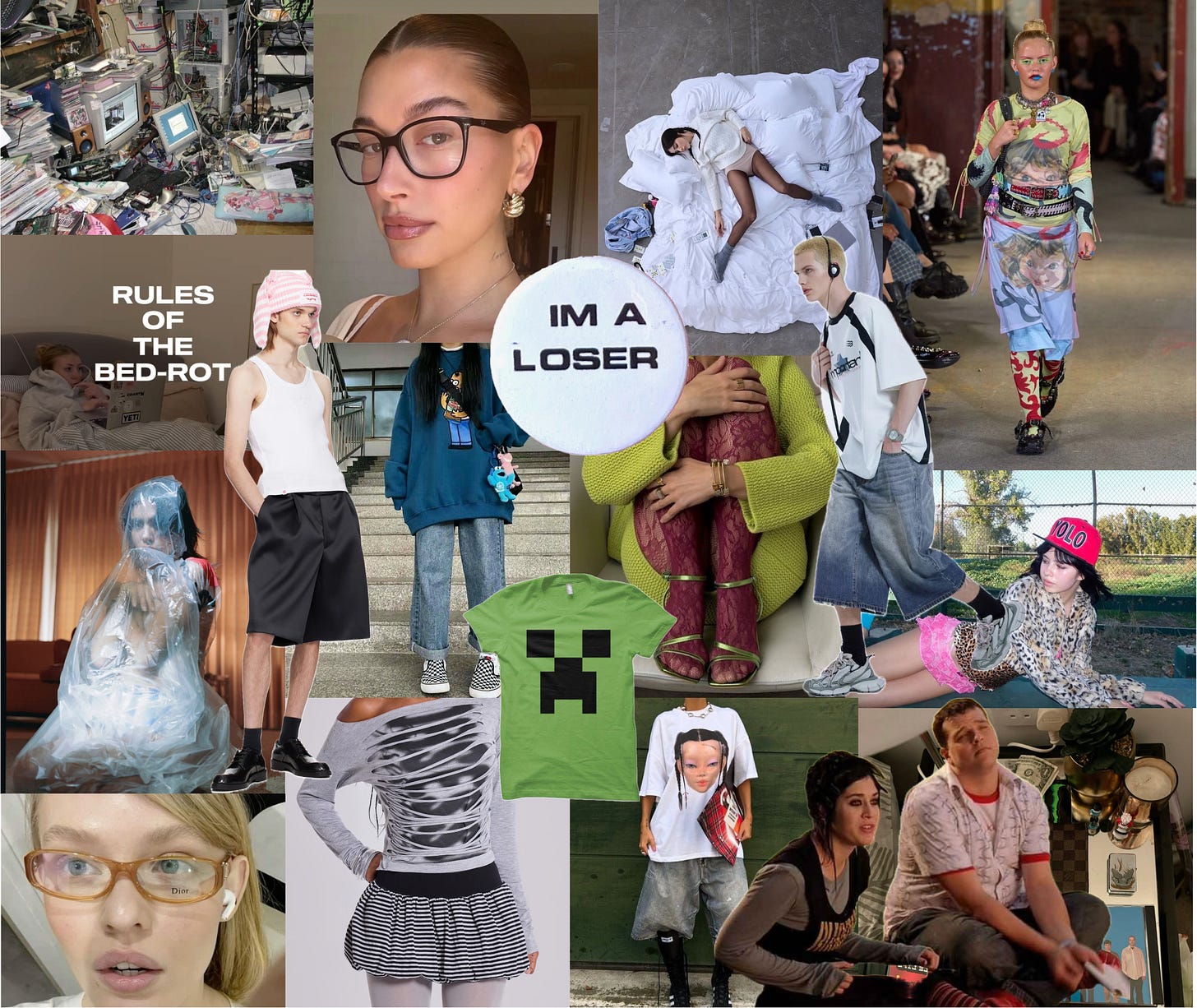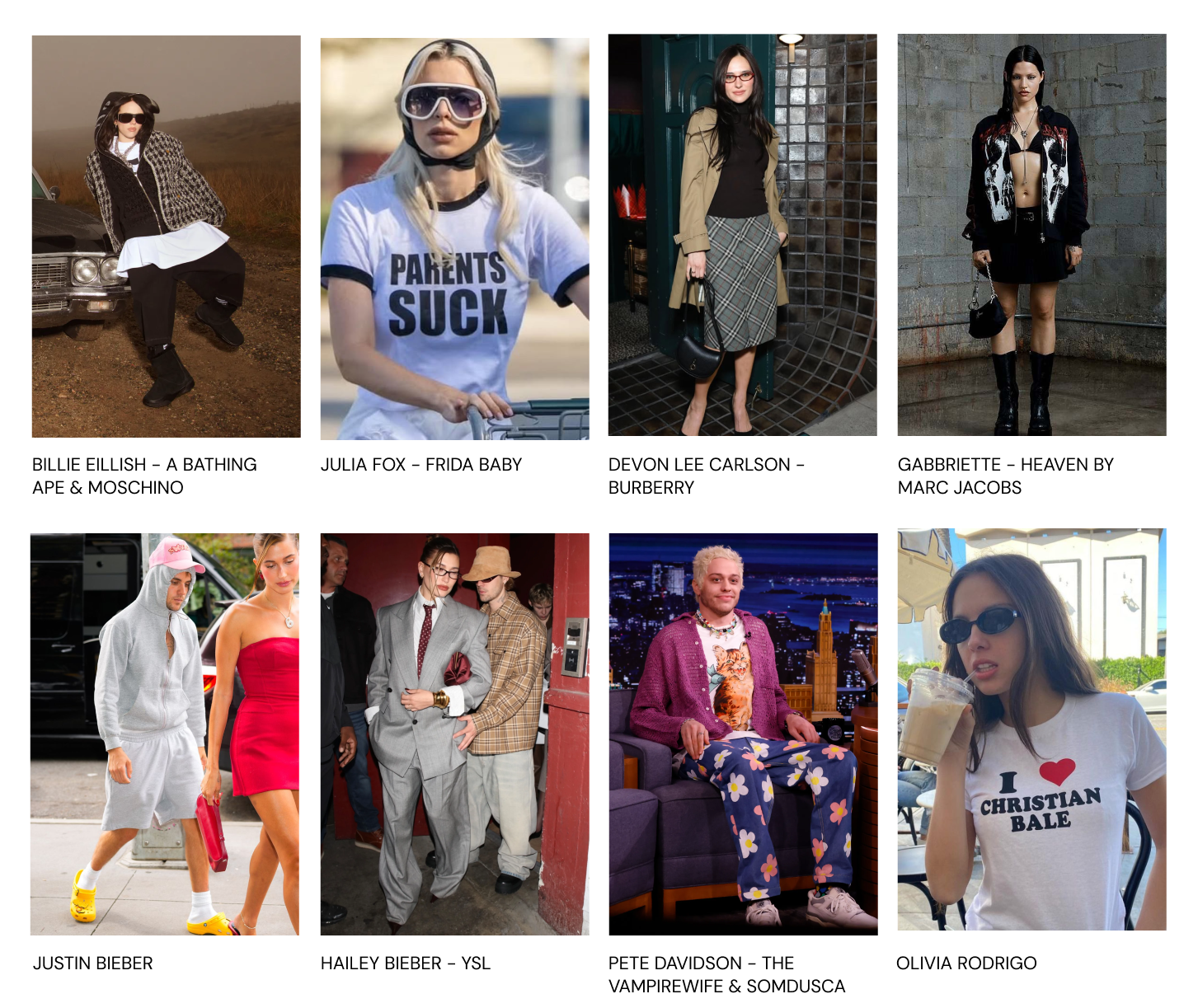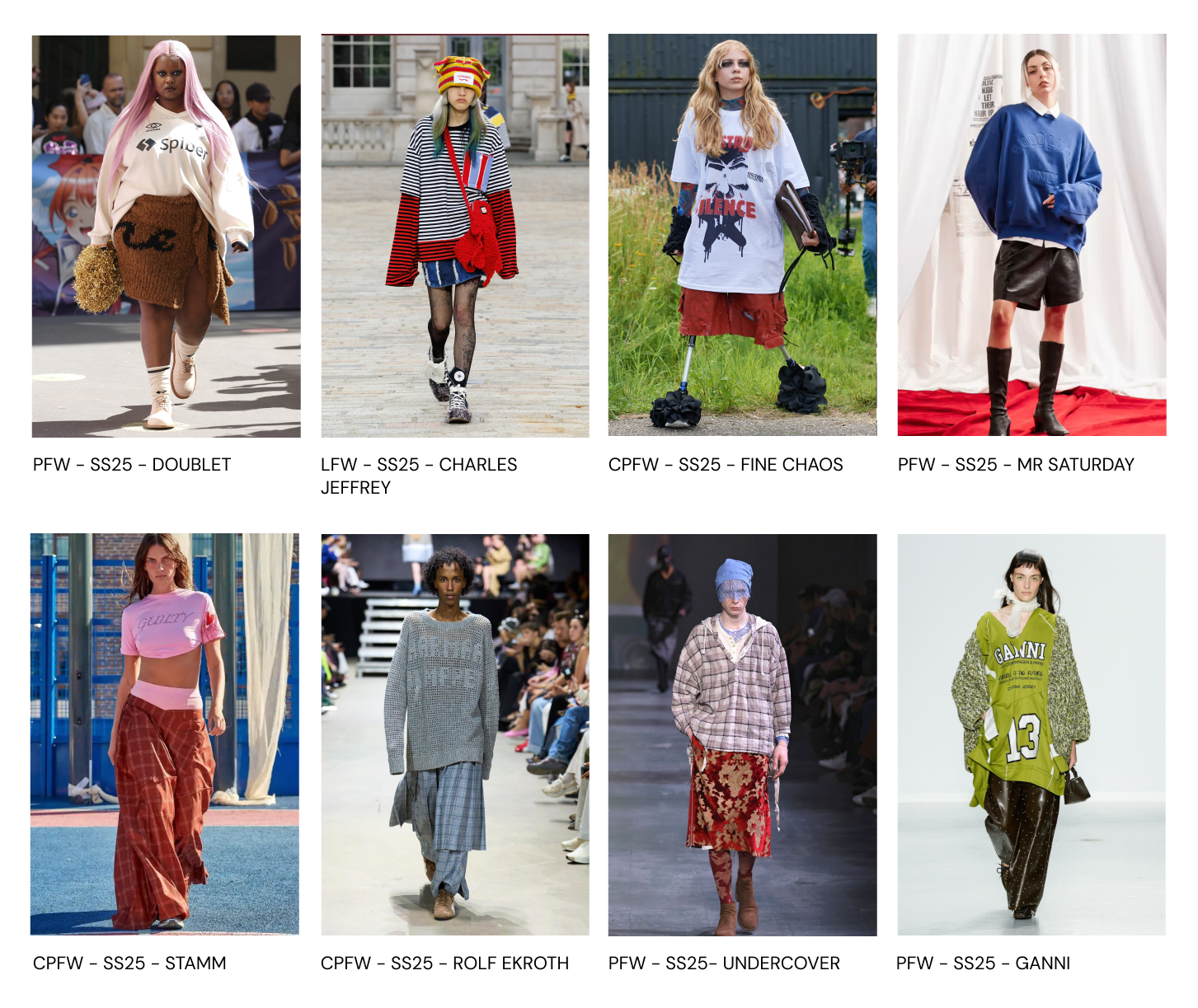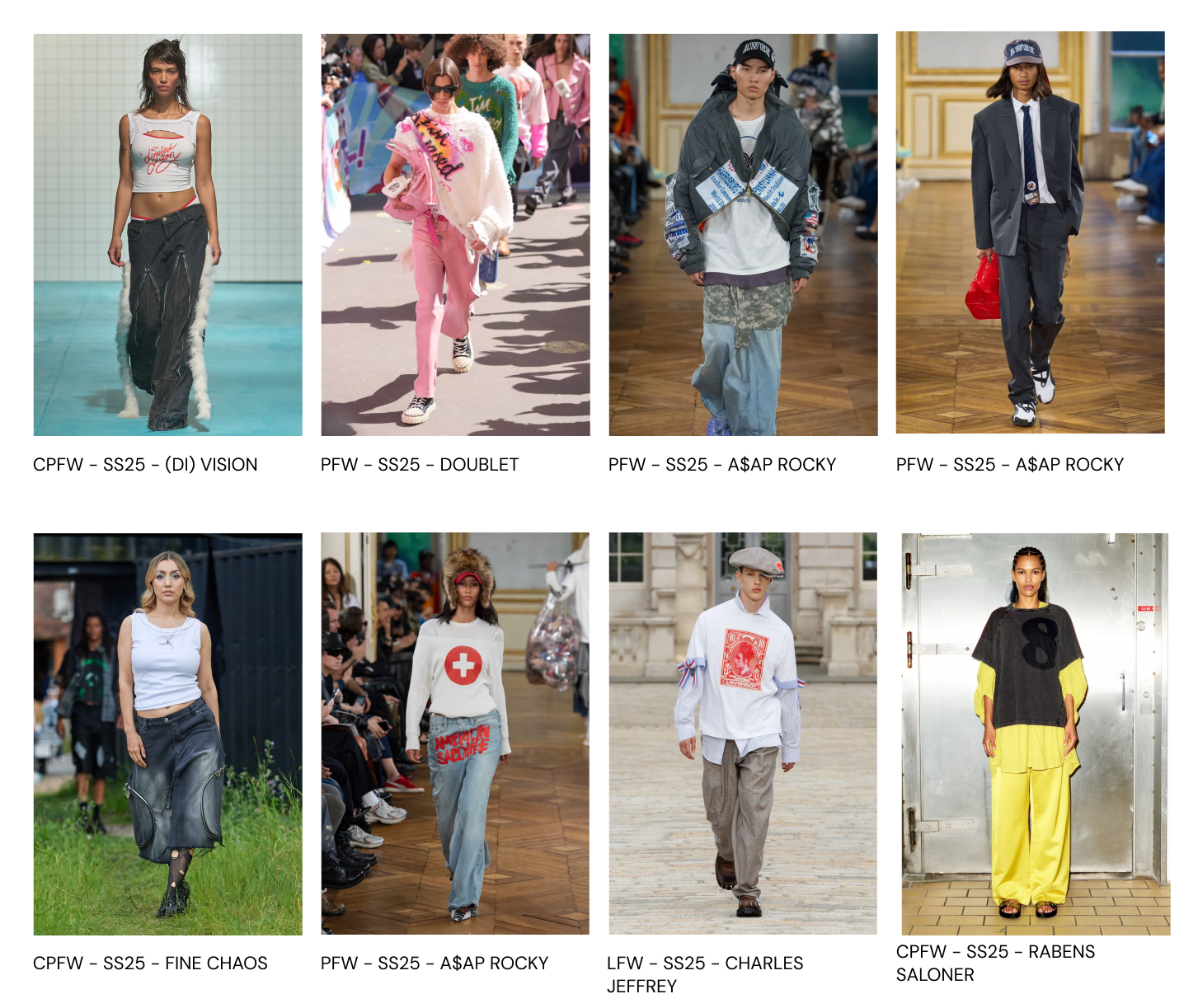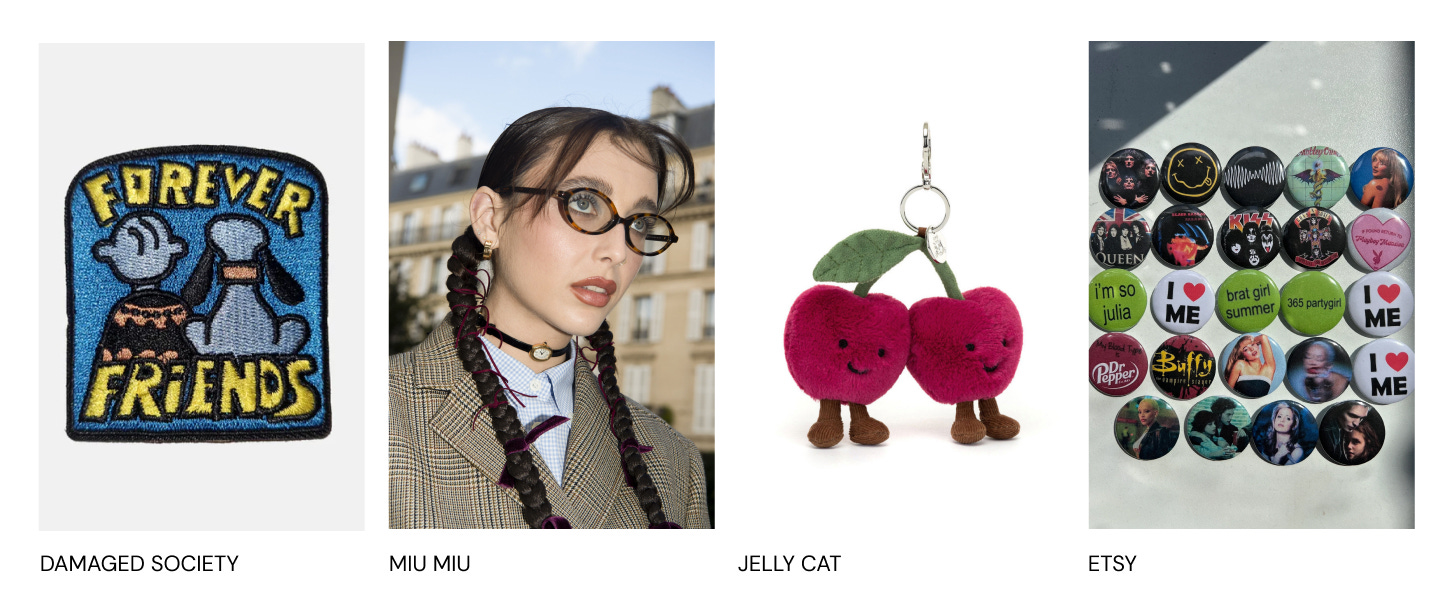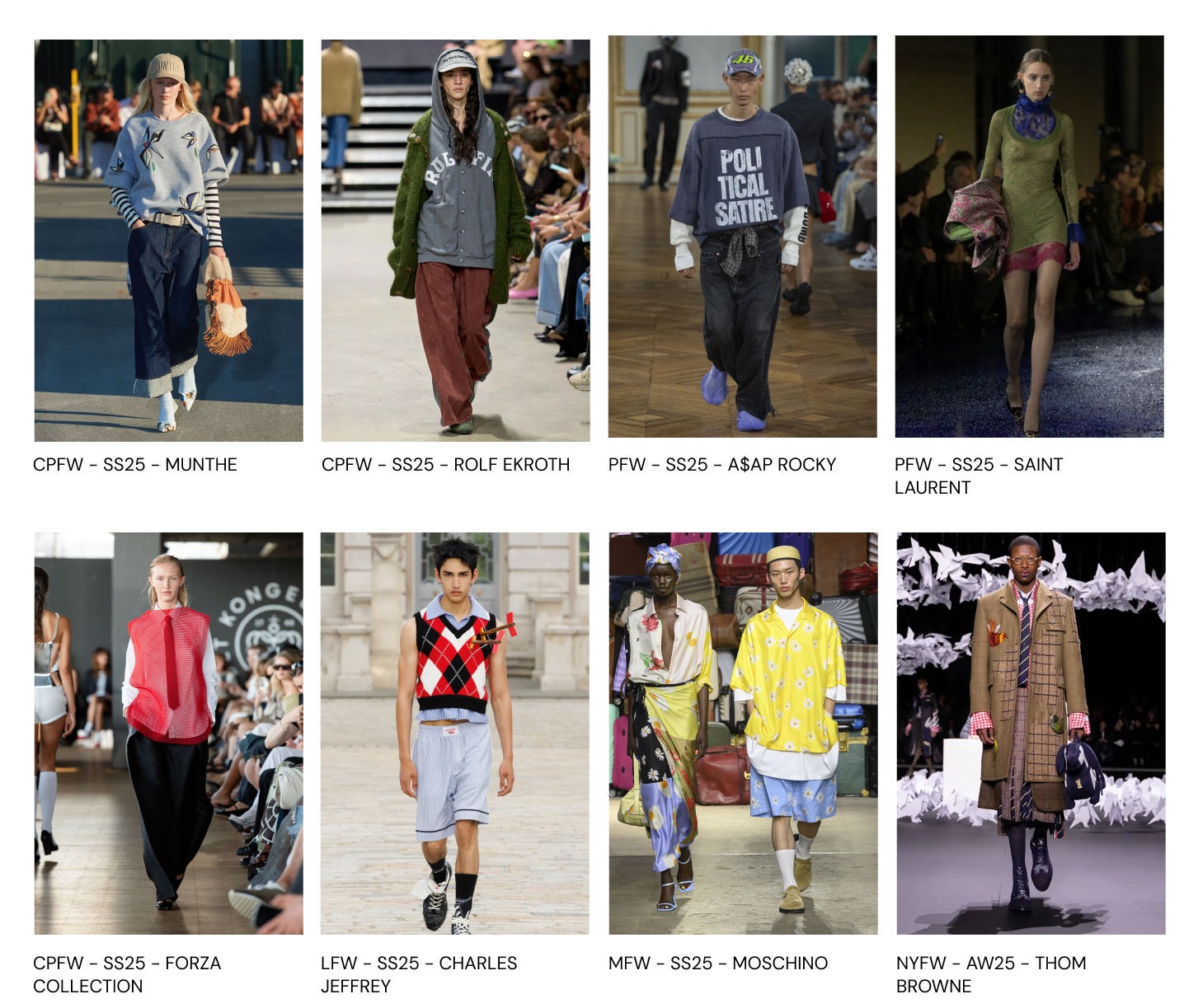Losercore and the Rejection of Curation
#Losercore is redefining 2025’s fashion direction, where awkwardness and offbeat nostalgia meet self-aware styling. Our latest report explores this rising anti-aesthetic and where it’s headed.
Before you dive in, this piece is part of our broader series on escapism in fashion. If you haven’t already, read our introductory report here for context on the cultural undercurrents driving this shift.
In an era defined by relentless digital acceleration and hyper-productivity, fashion has become a gateway to escape. As people seek comfort, new aesthetic and cultural movements have emerged, each offering different ways to step away from the demands of modern life, whether through immersive activities or emotional detachment. These trends reflect a collective desire for something beyond the present.
This series will explore how different “core” aesthetics fit into this cultural shift, examining their roots, their impact on fashion, and how they resonate with consumers today.
Read the first report of this series, Castlecore, here.
Losercore
Stuck in the perpetual cycle of the ‘always-on’ culture, we’re glued to our screens in fear of missing out and drowning in hyper-productivity.
Losercore is emerging as the unbothered rebellion.
An anti-performance movement that throws out self-optimisation in favour of chaos, nostalgia and emotional honesty. More than just a stylistic choice, it is a way of being, rejecting the curated self and leaning into the imperfect, the cringe and the human as the ultimate form of escape.
The Cultural Shift
Losercore is a natural consequence of cultural overload. Years of hustle culture, digital burnout, the rise of therapy speak, and pandemic-induced isolation have primed us for something that embraces not fitting in. Behaviours once seen as “loser-ish”, such as unfiltered sharing, ironic obsessions and niche hobbies, are now seen as symbols of freedom. Alongside, trends like “bed rotting”, anti-achievement content, and the desire to completely log off and disengage reflect a desire to simply be, without performance.
This shift is exacerbated by the erosion of community. The “I don’t owe anyone anything” mindset has driven people inwards. As social bonds loosen, self-expression becomes a solo activity. Losercore welcomes the internalised chaos and loneliness, but also the freedom that comes with it. Allowing for escape away from the expectations to always be desirable, successful and interesting.
At the same time, pop culture has been flooded with nostalgia. From the nostalgia of 90s and 2000 teen movies to early Tumblr aesthetics, there is a longing for a time before constant curated perfection. Losercore taps into that same yearning, romanticising the mundanity of awkward teenagehood, ironic T-shirts, mismatched layers, and outfits pulled together from bedroom floors.
It’s about expression driven by instinct, not aesthetics.
Even the rise of Instagram photo dumps and Substack blogging hinted at this turn towards unfiltered imperfection. Losercore goes a step further: if everything you enjoy is “cringe” to someone, why not lean in?
It’s about letting go of the fear of judgment and embracing solitude, absurdity, and self-expression, and doing it without an audience.
Who’s Leading the Movement?
Cultural figures like Pete Davidson, Billie Eilish and Justin Bieber have long embodied the Losercore spirit, prioritising comfort and nonchalance in their style, with layered hoodies, slouchy pants, and deliberately “weird” outfits. More recently, the aesthetic has spread to others like Julia Fox, Olivia Rodrigo, and Devon Lee Carlson, who bring a more playful, nostalgic energy to the aesthetic through graphic t-shirts and nerdy glasses. While Hailey Bieber and Gabbriette channel the oversized and grungier elements, making even professional suits more relaxed and comfortable.
Losercore as Escapism
Where Castlecore retreats into fantasy, Losercore escapes through irony, absurdity and visual disarray. Instead of dreaming of being a knight or princess, it just dreams of being left alone. It’s not about an idealised fantasy world, but retreating from this one with humour, detachment and a refusal to conform, by finding solace in niche internet communities, thrifted pieces, and a shared understanding that caring about what others think is embarrassing.
Losercore allows awkwardness to be the aesthetic, failure to become freedom, tapping into a desire to reject the aspirational and instead celebrate the mediocre, the weird, and the cringe, and in doing so, it creates a strange new kind of liberation.
Trending Elements
The Losercore aesthetic cannot be defined by one look, it’s a messy collage of comfort, chaos and customisation. From oversized silhouettes to DIY graphics and intentionally disjointed layers, these elements reflect the ethos of what Losercore is about.
Comfort First & Oversized Silhouette
A key visual thread running through the Losercore aesthetic is the rejection of conventional silhouettes. In its place, slouchy layers, elongated sleeves and garments which look like they have swallowed the wearer whole, all evoking a sense of emotional cocooning.
Designers like Doublet, Undercover, GANNI and Rolf Ekroth are leading the comfort fits approach, with puddle pants (-21.80%), chunky knits (+15.39%), and boxy hoodies (+47.16%). Whilst STAMM and FINE CHAOS push the proportions even further, creating pieces which feel like protection from the outside world rather than performing for it, turning pandemic dressing habits into an identity.
Data confirms the rise of comfort-centric dressing. Comfortable styling shows a positive trend of +19.38% in consumer interest over the last year. While comfortable outfits are also growing significantly, with a positive consumer interest trend of +15.27%. Interest in oversized clothing specifically has also been rising; searches for oversized jackets have seen a positive trend of +73.76%, while oversized pants (+12.87%) continue to trend upward as well.
Mainstream brands from Jaded London to The Frankie Shop are following suit, creating loose jeans (+26.92%), oversized hoodies (+6.52%), and soft silhouettes (-6.35%) that drown the form in a way that feels less about fashion and more of a barrier against the world.
Graphics & Customisation
Another pillar of Losercore is its emphasis on customisation, ironic graphics and distressed finishes, rejecting new and opting instead for lived-in, altered, or personalised.
Brands like Charles Jeffrey LOVERBOY and Doublet use slogans, illustrations and DIY sensibilities, all evoking the early Internet and Tumblr culture. A$AP Rocky’s 2025 collection reflects Losercore’s aesthetic trend signals perfectly, with patchwork (+2.77%) ties, jackets covered in personal motifs, and graphic denim (+17.3%). Similarly, (di)vision hand-modified looking jeans with exaggerated trims and zip details (+6.5%) and Rabens Saloner’s overwashed, nostalgic graphics point to the aesthetics search for imperfection and individuality, where garments are part protest, part diary.
The demand for visual individuality is reflected in consumer data: consumer interest in graphic jackets has shown as a positive trend with +35.50% and graphic t-shirts with a +18.33% over the last year.
Heaven by Marc Jacobs and ASOS.com are capitalising on the nostalgia of 90s style (+2.0%) prints, while smaller labels like NAMED COLLECTIVE and Scuffers simulate these DIY finishes (+10.88%), giving consumers an aesthetic without the effort.
Continuing with the trend of personalisation, accessorising especially around niche interests is another key way to customise an outfit. Whether through fun pins (+25.20%) and iron-on badges (+19.2%), or plushy charms and statement glasses (+12.2%), the need to embrace your interest outweighs the fear of not looking put together. Bag charms (+273.27%), in particular, have seen a resurgence, turning an everyday bag into a canvas for self-expression. Whilst brands are tapping into this customisation trend, and do the DIY themselves, the want for personalising an outfit is still prevalent.
Layering & Visual Chaos
The heart of Losercore lies in visual chaos, a rejection of cohesion in favour of emotional honesty. Layering is not just a stylistic choice, but a reflection of inner disarray.
Designers like Rolf Ekroth, MUNTHE, and Forza Collective showcase this in voluminous, clashing layers that throw together flannel shirts (+8.15%), chunky knit cardigans (+26.36%), oversized suits (+20.41%), and sporty looks (+31.77%) in an uncurated way. Even Saint Laurent and MOSCHINO have partaken in this chaos, with contrasting textures, colours and patterns overlapping each other, encapsulating the feelings of emotional excess and exhaustion that sparked Losercore.
Charles Jeffrey LOVERBOY and Thom Browne, Inc. take these ideas further, completely embracing chaos as a performance of over-accessorising, asymmetric layering and distorted shapes which push against traditional style choices. Rooted in a deeply relatable sense of dressing in a rush and picking random pieces out of the wardrobe, or simply not caring.
Consumer data suggests that they resonate with this visual overwhelm, with layering-related searches increasing significantly. Long sleeve layering has grown by +40.74%, while the overall layering trend shows continued acceleration with a positive trend of +17.84% in consumer interest over the past year.
Brands like Free People, Ed Hardy and Minga London are bringing chaotic layering back into mainstream wardrobes. Reflecting a desire to visualise the emotion and overwhelm on the outside, turning internal chaos into a wearable, relatable statement.
Together, these design elements push back against conventional taste, order, and the societal demand to always be striving towards your perfect self. Fully leaning into the weird, honest and deeply human mess of not having it all together.
The Future of Losercore
Losercore may be a new name, but its spirit has existed for years, whether in Dadcore, Normcore or taking inspiration from Adam Sandler’s unbothered paparazzi and red carpet looks. What distinguishes Losercore is that it takes the ethos and lifestyle even further: not just dressing badly, but refusing to care whether or not you look good. It reflects a generational fatigue with aesthetics that demand too much.
As trend cycles continue to swing between minimalism and maximalism, Losercore offers a third option: opting out entirely. Resisting the choice of good or bad, desirable or undesirable. Refusing to even acknowledge society's expectations, instead of just critiquing them.
In doing so, it taps into something much deeper than fashion: a longing to feel unburdened, unjudged and maybe a little lost. Losercore is not just about looking like a loser, but allowing yourself the freedom to be one.
Because in embracing the chaotic, atypical, and often meme-worthy, individuality shines through.



